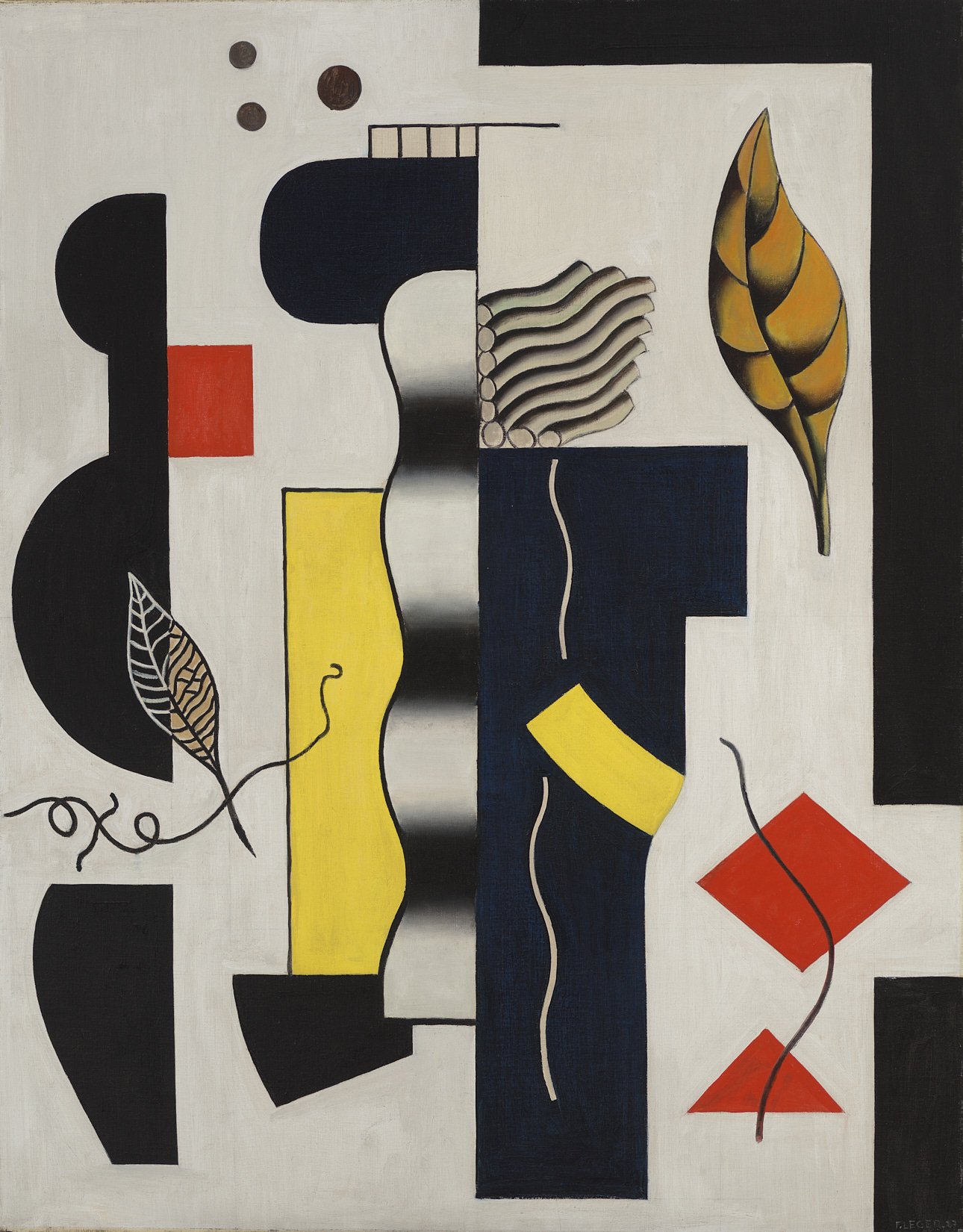Fernand Léger
Still Life, 1927

Fernand Léger
Still Life, 1927
Kunst Museum Winterthur, Legat Dr. Emil und Clara Friedrich-Jezler, 1973
Foto: SIK-ISEA, Zürich (Martin Stollenwerk)
After the First World War Fernand Léger's work changed; the animated, fragmented compositions made way for a new form. A cool order determined his works.
While searching for classical, clear design, Léger moved towards mural art and began designing projects for architects. This closeness to architecture led Léger towards abstract art. But for Léger the realist, it was unthinkable to paint a picture without recognisable figures and objects. Therefore he looked to achieve a balance between figural portrayal and abstract forms. "The picture exists in the balance of these two values; the real and imagined," he wrote about it, "the difficulty lies in finding the balance between these two poles."
In this still life the balance between figure and abstract form is clearly expressed: there is a halved male torso standing to the right of the middle axis. He is based on a king from a pack of cards. There are few items of his costume remaining - only the wide epaulettes. The figure borders on the plastically modelled element, that originates in the world of technology. He is crowned by a screw.
The red diamond from a pack of cards is incorporated in the picture somewhere else. Rectangular, triangular and circular forms represent the geometric world, leaves and tendrils the organic world. All these elements are not arranged in the traditional still life style, but are freely distributed within the pictorial surface. A female torso on the left-hand edge and a frame on the right-hand edge enclose the picture.


